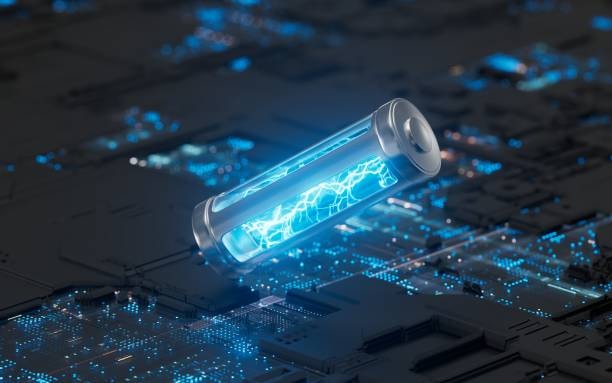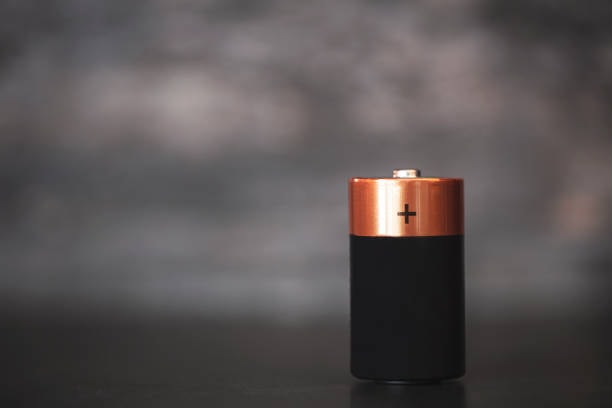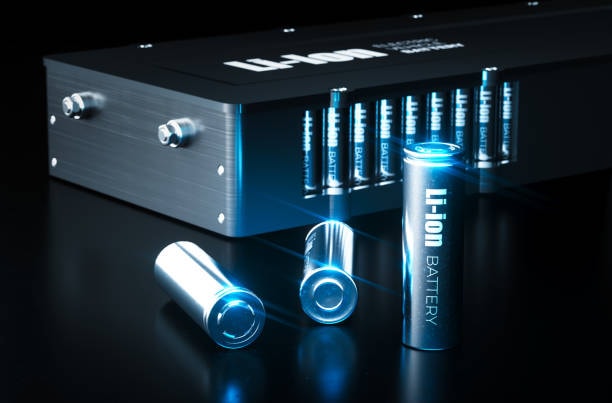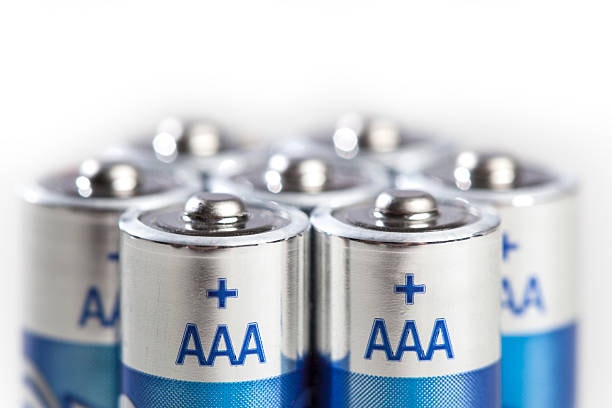
From remote controls to flashlights and toys, daily appliances depend on batteries for running. Two most often used kinds are AA and AAA batteries. Although they seem to be the same, their performance, scale, and use are affected by important variances. Knowing these variances will enable you to select the correct battery for your equipment. Many commonplace electronics, including remote controls and clocks as well as cameras and toys, depend on batteries. Among the most often used batteries are AA and AAA ones. Although these two kinds have some things in common, their sizes, capacities, and uses vary greatly. Selecting the correct battery for your devices depends on an awareness of these variations.
Everything you need to know about AA and AAA batteries—including their features, useful applications, and performance in different electronics—will be broken out in this thorough book.
What is a Battery?

Designed to turn stored chemical energy into electrical energy, batteries are electrochemical devices. This mechanism lets the battery provide power to electronic gadgets so they may run as they should. Fundamentally, a battery consists of one or more single units called cells. Every cell is the fundamental building block of a battery and consists of three key parts:
- During the discharge process, this electrode—the anode—negative electrode releases electrons.
- This electrode, the cathode, gains electrons throughout the discharge process—positively.
- This chemical medium, electrolyte lets ions travel between the anode and cathode therefore enabling the passage of electrical current.
Combining these elements causes batteries to undergo a chemical reaction producing electrical energy, which is subsequently used to run different appliances.
What Are AA and AAA Batteries?

Commonly used standard cylindrical batteries in home devices are AA and AAA batteries. Though they come in different sizes, power capacity, and intended application, they are members of the same family of batteries.
- Larger in scale and offering more energy capacity is AA battery.
- Smaller and usually used in portable devices needing less power is AAA battery.
What Is an AA Battery?
Standard-sized single-cell or dry-cell batteries, AA batteries—also called double aa batteries tend two-A batteries or Mignon batteries—a name meaning “dainty” in French—are Their low moisture content helps to enable smooth current flow, so providing dependable energy for many different kinds of equipment. Usually delivering 1.5 volts of electricity, AA batteries fit many domestic devices with their standard voltage.
One distinctive characteristic of AA batteries is their cylindrical form. Greater than their AAA counterparts, these batteries have a length of about 50.5 mm and a diameter of 14.5 mm. Their larger internal volume makes sense for their energy capacity as compared to smaller battery models.
Highly flexible and often selected for systems needing moderate to high power are AA batteries. Their strong energy production qualifies them for devices that consume more energy over a given period. Typical gadgets running AA batteries include:
- Digital cameras and flashlights
- Remote controls toys wall clocks
Longer longevity in energy-demanding gadgets is one of the main advantages of AA batteries. Because of their greater power capacity, AA batteries need less refills, which is especially handy for consumers using gadgets far away or for longer lengths of time.
The simplicity of handling AA batteries adds still another practical benefit. Their bigger dimensions make installation of gadgets simpler; a tactile “click” usually indicates correct location. This function guarantees a constant power connection by lowering the possibility of misalignment during installation.
AA batteries have stayed a reliable energy source for both home and business use even as more modern battery technologies have emerged. Their dependability, robustness, and constant performance still make them a favorite choice in many different kinds of electronics.
Battery Types, Components, and Characteristics
The several kinds of batteries, their main parts, usual capacity ranges, and voltage ratings are described here. This knowledge will enable you to grasp the variations between typical battery sizes and types, both main (non-rechargeable) and secondary (rechargeable).
| Category | Battery Type | Anode | Cathode | Electrolyte | Typical Capacity | Voltage |
| Primary (Non-Rechargeable) | Zinc Carbon | Zinc | Manganese Dioxide | Ammonium Chloride (or Zinc Chloride) | 400 to 700 mAh | 1.5V |
| Alkaline | Zinc | Manganese Dioxide | Potassium Hydroxide | 1,500 to 3,000 mAh | 1.5V | |
| Secondary (Rechargeable) | Nickel Cadmium (NiCd) | Cadmium | Nickel Oxide Hydroxide | Potassium Hydroxide | 600 to 1,000 mAh | 1.2V |
| Nickel Metal Hydride (NiMH) | Metal Alloy | Nickel Oxide Hydroxide | Potassium Hydroxide | 600 to 3,000 mAh | 1.2V |
Key Notes:
- Low-drain devices such as clocks, remote controls, or spotlights when recharging is not possible benefit from primary batteries.
- High-drain gadgets include digital cameras, game controllers, and cordless tools fit secondary batteries, which provide the multiple recharging benefit.
- For gadgets needing more long-lasting power, alkaline batteries offer better capacity than zinc-carbon batteries.
- Because of its better energy capacity and environmental friendliness than Nickel Cadmium (NiCd) batteries, nickel metal hydroxide (NiMH) batteries are becoming more and more popular among rechargeable choices.
What Is a AAA Battery?

Another often used battery kind are AAA batteries, sometimes known as triple-A batteries. AAA batteries generate 1.5 volts of electricity, the same voltage as AA batteries, thereby offering a consistent power source for many different kinds of equipment aaa batteries typically. Their lesser scale, nonetheless, distinguishes them.
Shorter and much thinner than AA batteries, AAA batteries measure roughly 44.5 mm in length and 10.5 mm in diameter. Their thin profile lets them fit perfectly into smaller gadgets, which sometimes have restricted battery capacity.
Many contemporary devices have switched to use AAA batteries instead of AA cells thanks to developments in electronic design and battery efficiency battery sizes. Once driven by AA batteries, devices now use AAA cells to conserve space high power devices while preserving good performance.
Devices including AAA batteries are often aaa batteries provide seen in:
- TV remote controllers
- Clock alarms
- Wired keyboards and mice
- LED cord lights
- Medical instruments including glucose meters and digital thermometers
AAA batteries’ small form gives portable electronics certain useful benefits. Because of a smaller scale, producers can design thinner, lighter, more handleable equipment.
Users of devices fitted with AAA batteries sometimes find a clear click sound indicating correct placement, therefore guaranteeing a safe connection. This keeps unintentional disconnection away so the gadget runs as it should.
AAA batteries, for all their modest scale, can nonetheless deliver consistent energy performance. In low-drain devices—that which require less power—they are very successful. AAA batteries’ significance in the realm of electronics is underlined as new devices becoming more efficient and small.
Battery Types and Typical Capacities
The many kinds of batteries are shown below together with their usual capacity ranges. Knowing these variations will enable you to choose the battery best for the power consumption of your gadget.
| Category | Battery Type | Typical Capacity |
| Primary (Non-Rechargeable) | Zinc Carbon | 500 to 600 mAh |
| Alkaline | 800 to 1,300 mAh | |
| Secondary (Rechargeable) | Nickel Cadmium (NiCd) | 300 to 500 mAh |
| Nickel Metal Hydride (NiMH) | 600 to 1,300 mAh |
Key Notes:
- Low-drain gadgets like clocks, remotes, or flashlights fit zinc carbon batteries the best.
- Higher energy capacity alkaline batteries make them perfect for medium-drain applications like portable radios and toys.
- Though less capacity than other rechargeable choices, nickel cadmium (NiCd) batteries are resilient. Cordless phones, power tools, and emergency illumination all make use of them.
- Perfect for high-drain devices like digital cameras and gaming controllers, nickel metal hydrides (NiMH) batteries have enhanced energy capacity.
Choosing the correct battery type depending on capacity guarantees increased gadget performance and longer-lasting power.
Comparison of AA and AAA Batteries
Including chemical composition, size, and usual capacity, the following table offers a thorough comparison between AA and AAA batteries. This comparison will enable you to better know which kind of battery fits your device need.
| Category | Battery Type | AA Battery – IEC / ANSI Nomenclature | AA Battery Dimensions | AA Battery Capacity | AAA Battery – IEC / ANSI Nomenclature | AAA Battery Dimensions | AAA Battery Capacity |
| Primary (Non-Rechargeable) | Zinc Carbon | R6 / 15D | Height: 49.2 mm – 50.5 mm | 400 to 700 mAh | R03 / 24D | Height: 43.3 mm – 44.5 mm | 500 to 600 mAh |
| Alkaline | LR6 / 15A | Height: 49.2 mm – 50.5 mm | 1,500 to 3,000 mAh | LR03 / 24A | Height: 43.3 mm – 44.5 mm | 800 to 1,300 mAh | |
| Secondary (Rechargeable) | Nickel Cadmium (NiCd) | KR6 / 15K | Height: 49.2 mm – 50.5 mm | 600 to 1,000 mAh | KR03 / 24K | Height: 43.3 mm – 44.5 mm | 300 to 500 mAh |
| Nickel Metal Hydride (NiMH) | HR6 / 15H | Height: 49.2 mm – 50.5 mm | 600 to 3,000 mAh | HR03 / 24H | Height: 43.3 mm – 44.5 mm | 600 to 1,300 mAh |
Key Differences Explained:
- In height and diameter as well, AA batteries are bigger than AAA batteries.
- Capacity: Generally speaking, AA batteries have more energy than AAA cells, which makes them perfect for toys, flashlights, and digital cameras among other power-hungry appliances.
- Low-power applications like TV remotes, wireless mouse, and LED string lights call for AAA batteries.
- Both AA and AAA batteries come in a variety of chemistries including Zinc Carbon, Alkaline, Nickel Cadmium (NiCd), and Nickel Metal Hydride (NiMH), each with differing performance qualities.
To guarantee best performance when choose between AA and AAA batteries aaa batteries understanding, take the compartment size and power consumption of your gadget into account.
Key Differences Between AA and AAA Batteries
Although both kinds have comparable uses, they differ in aa vs crucial aspects.
1. Size and Dimensions
- Dimensions of 50.5 mm in length and 14.5 mm in diameter define AA Battery.
- Dimensions of a AAA battery are 10.5 mm in diameter and 44.5 mm in length.
AAA batteries are perfect for devices with limited space of their compact size.
2. Power Capacity (mAh – Milliamp Hours)
- Usually ranges between 2000 to 3000 m Ah using AA batteries.
- AAA batteries have 600 to 1200 m Ah range.
This discrepancy indicates that AA batteries fit for energy-hungry gadgets since they provide greater power over a longer period.
3. Weight
- AA Battery: Heavier given size and capacity have raised demand.
- Lighter, hence perfect for portable devices, AAA batteries.
4. Usage in Devices
- Common items like cameras, toys, flashlights, and wall clocks that use more energy consumption AA batteries.
- Smaller devices such TV remotes, LED lights, wireless mice, and small medical tools run AAA batteries.
5. Cost Differences
- Because of their greater size and higher capacity, AA batteries typically cost more than AAA ones.
- Often less expensive, AAA batteries may need replacement sooner if used in power-demanding gadgets.
Which Battery Should You Choose?

The energy demands of your device will determine which of AA or AAA batteries you need.
- Because of their more capacity, AA batteries are preferable for power-hungry devices as portable radios, motorized toys, or gaming controllers.
- AAA batteries are perfect for gadgets like remote controls, digital thermometers, or LED candles that call for little power.
Are AA and AAA Batteries Interchangeable?
No, size variations cause AA and AAA batteries to be non compatible with compact devices. Devices are made to especially fit one type of battery.
Battery Types: Alkaline vs. Rechargeable
Two major forms of both AA and AAA batteries are
- Non-rechargeable and perfect for daily usage are alkaline batteries.
- More ecologically friendly and reasonably priced over time are rechargeable batteries.
Although their voltage is sometimes somewhat lower, rechargeable batteries are ideal for routinely used equipment and solar power systems.
How to Extend Battery Life
To maximize battery capacity:
- Turn off gadgets not in use.
- Keep batteries dry and cold.
- If batteries are not used for long, take them out of gadgets.
- For longer lifetime, choose premium batteries from reliable manufacturers.
Can You Substitute AA Batteries for AAA Batteries?
Though their chemical compositions and voltage ratings are the same, AA and AAA batteries are not interchangeable because of their physical sizes. Because AA batteries are far bigger in both width and length than AAA batteries, they are incompatible with devices meant for the other type. For instance, the smaller size of the AAA batteries will prohibit them from establishing appropriate contact with the battery terminals if you try to use them in a wall clock that needs AA batteries. This lack of connectivity can cause the gadget to fail totally or produce an erratic power supply.
On the other hand, because they are too big to fit into the specified battery compartment, AA batteries will not fit devices made for AAA batteries. Devices that run on AAA batteries—such as remote controls, wireless keyboards, or small toys—have limited room in their battery slots, hence AA batteries just cannot be inserted. When comparing their measurements, AA batteries measure roughly 14.5 mm in diameter and 50.5 mm in length while AAA batteries are substantially smaller at 10.5 mm in diameter and 44.5 mm in length.
Voltage and Power Output Considerations

Apart from physical dimension, variations in voltage and energy output between AA and AAA batteries influence compatibility as well. Though the conventional non-rechargeable AA and AAA batteries have 1.5 volts, nominal voltage for rechargeable models sometimes vary. Usually running 1.2 volts, rechargeable AA and AAA batteries might not be enough for appliances needing the full 1.5V power supply.
For instance, a Smart TV remote control only requiring two AA alkaline batteries will run effectively using three volts overall. Should you substitute two rechargeable AA batteries for those, the total voltage would only be 2.4 volts, which could result in decreased performance or entirely stopped remote control operation. High-power electronics dependent on constant energy delivery can especially show this voltage gap.
Types of Batteries: Primary vs. Secondary
Primary and secondary batteries are the two basic categories into which batteries fall usually. Every kind has special qualities that define its application, lifetime, and reusing capacity.
Primary Batteries (Non-Rechargeable Batteries)
Designed just for single usage, primary lithium batteries are These batteries have an irreversible electrochemical mechanism whereby the battery cannot be refilled or used after the stored chemical energy runs out. Once their energy runs out, main batteries must thus be thrown away and replaced with fresh ones.
Devices like wall clocks, remote controllers, or smoke detectors that run little power or are used seldom often feature these batteries. Primary batteries are sometimes referred to as non-rechargeable batteries or throwaway batteries because of their disposable character.
Secondary Batteries (Rechargeable Batteries)
Unlike main batteries, secondary batteries are made to be repeatedly reusing by reversing the electrochemical process. The chemical reaction of a secondary battery under use produces electrical energy to run the linked gadget. The battery may be replenished, though, by running an external electrical current after the stored energy runs out.
The electrical energy of the recharging process drives the chemical components within the battery back to their natural state, therefore restoring its capacity to create power. Many times this cycle of discharging and recharging can be repeated, so secondary batteries are a more affordable and environmentally friendly option for devices requiring regular power.
Commonly found in high-drain, portable electronic devices and gadgets such cellphones, computers, power tools, and digital cameras are secondary batteries Many times referred to as rechargeable batteries, they can be recharged several times.
Diverse Battery Designs and Chemistries
Apart from their designation as either main or secondary batteries, several battery kinds exist with different chemical composition, electrode materials, electrolyte characteristics, and physical form. From little home appliances to more massive industrial equipment, these variants are made to satisfy the power needs of many electronic devices.
Batteries in many forms and sizes have been created by manufacturers to fit changing technological requirements. For instance, whereas larger battery packs are employed in electric cars and renewable energy storage systems, button cell batteries are made for small devices like watches and hearing aids.
Knowing these basic features of battery design and chemistry will give you a strong basis for investigating the variations between AA and AAA batteries, therefore guiding your choice of battery type most appropriate for your requirements.
Evaluating Cost for Maximum Savings
Examining the long-term financial gains as well as the initial purchase cost can help one choose the most reasonably priced battery. Investing in rechargeable batteries could eventually become more reasonably priced for products like cameras or toys that need regular battery changes. Conversely, single-use alkaline or zinc-carbon batteries or lithium ion batteries could be the preferable option for gadgets that run little power and are used less often.
For example, a professional photographer who mostly depends on battery-powered equipment could find rechargeable AA batteries indispensable for economy. The photographer guarantees constant power availability by charging these batteries between sessions, therefore reducing running battery costs.
By juggling the initial outlay with possible long-term savings, consumers can choose between AA and AAA batteries with knowledge. Taking energy demands into account together with usage patterns guarantees aaa batteries offer best performance, increased efficiency, and better financial results.
Environmental Impact
Materials found in AA and AAA batteries could damage the surroundings if improperly disposed of. To cut waste and environmental damage, think about recycling old batteries at specified drop-off sites.
Conclusion
Size, power capacity, and use define the unique benefits of both AA and AAA batteries. AAA batteries shine in little electronics applications aa batteries, whereas AA batteries are great for high-energy applications. Selecting the appropriate kind guarantees that your gadgets run effectively and without faults.
